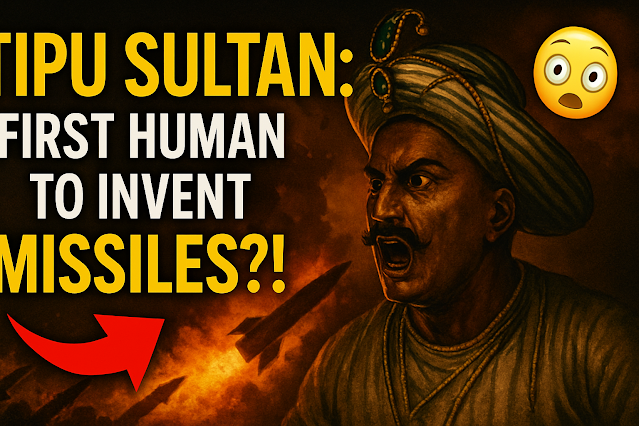In a stunning twist to global military history, new discussions have reignited over the claim that Tipu Sultan was the first human to invent missile technology—decades before the West even imagined such weapons. Could the 18th-century ruler from India truly be the forgotten father of modern rocketry?
As shocking as it sounds, growing historical and scientific evidence points towards Tipu Sultan’s pioneering use of iron-cased rockets—also known as Mysorean rockets—that not only outpaced his contemporaries but also inspired British military advancements in the 19th century.
📜 Tipu Sultan: The Rocket Revolutionary
Tipu Sultan (1751–1799), ruler of the Kingdom of Mysore in Southern India, was more than just a fierce opponent of British colonization. He was a visionary military strategist who developed advanced warfare techniques that shocked even the East India Company. Among his most revolutionary achievements was the deployment of iron-cased rocket artillery, marking the first recorded military use of missiles by a human in history.
These weren’t crude firecrackers or primitive bombs. Tipu Sultan’s missiles were complex, engineered devices—some reaching over 2 kilometers in range. They consisted of iron tubes filled with gunpowder, strapped to swords or bamboo shafts, designed to spin mid-air, creating chaos in enemy formations.
💣 Mysorean Rockets: The First Modern Missiles?
The Mysorean rockets were far more sophisticated than any rocket weapons known at that time. Prior to Tipu Sultan, Chinese fire arrows and early European rockets lacked casing strength, precision, or range. Tipu Sultan's innovation lay in:
-
Iron-cased chambers, which could withstand high-pressure explosions
-
Enhanced propulsion, allowing longer ranges and more accuracy
-
Mass deployments, with Tipu’s army having a dedicated Rocket Corps of over 5,000 soldiers
When Tipu’s forces used these against British troops in the Second and Third Anglo-Mysore Wars, the British were stunned by their destructive power. After his death in 1799, British engineers reverse-engineered captured Mysorean rockets, leading to the development of the Congreve rocket, which was later used in the Napoleonic Wars.
📚 The West’s Silent Acknowledgment
Though mainstream global history often credits William Congreve as the pioneer of missile warfare, the Congreve rocket was directly inspired by Tipu Sultan’s technology. Congreve himself wrote that he had studied rockets taken from Tipu's arsenals.
Historians now recognize Tipu Sultan’s rocket system as a milestone in the evolution of modern missiles, and he is widely regarded as the first human to invent and deploy missile technology on a battlefield.
🌍 Why the World Forgot This Genius
Colonial narratives often suppressed the achievements of indigenous leaders. Tipu Sultan's contributions were overshadowed by British victory and their rewriting of history. Only recently have researchers and Indian defense analysts begun highlighting Tipu Sultan’s legacy as the world’s first missile innovator.
His contributions are now studied in defense research circles, and replicas of Mysorean rockets are displayed in London’s Royal Artillery Museum—ironically commemorating an Indian innovation that shook the British Empire.
🔁 The Legacy Lives On
India’s DRDO (Defence Research and Development Organisation) has cited Tipu Sultan’s rocket science as an inspiration, proving his long-term impact on defense technology







.png)

.png)
.png)
0 Comments